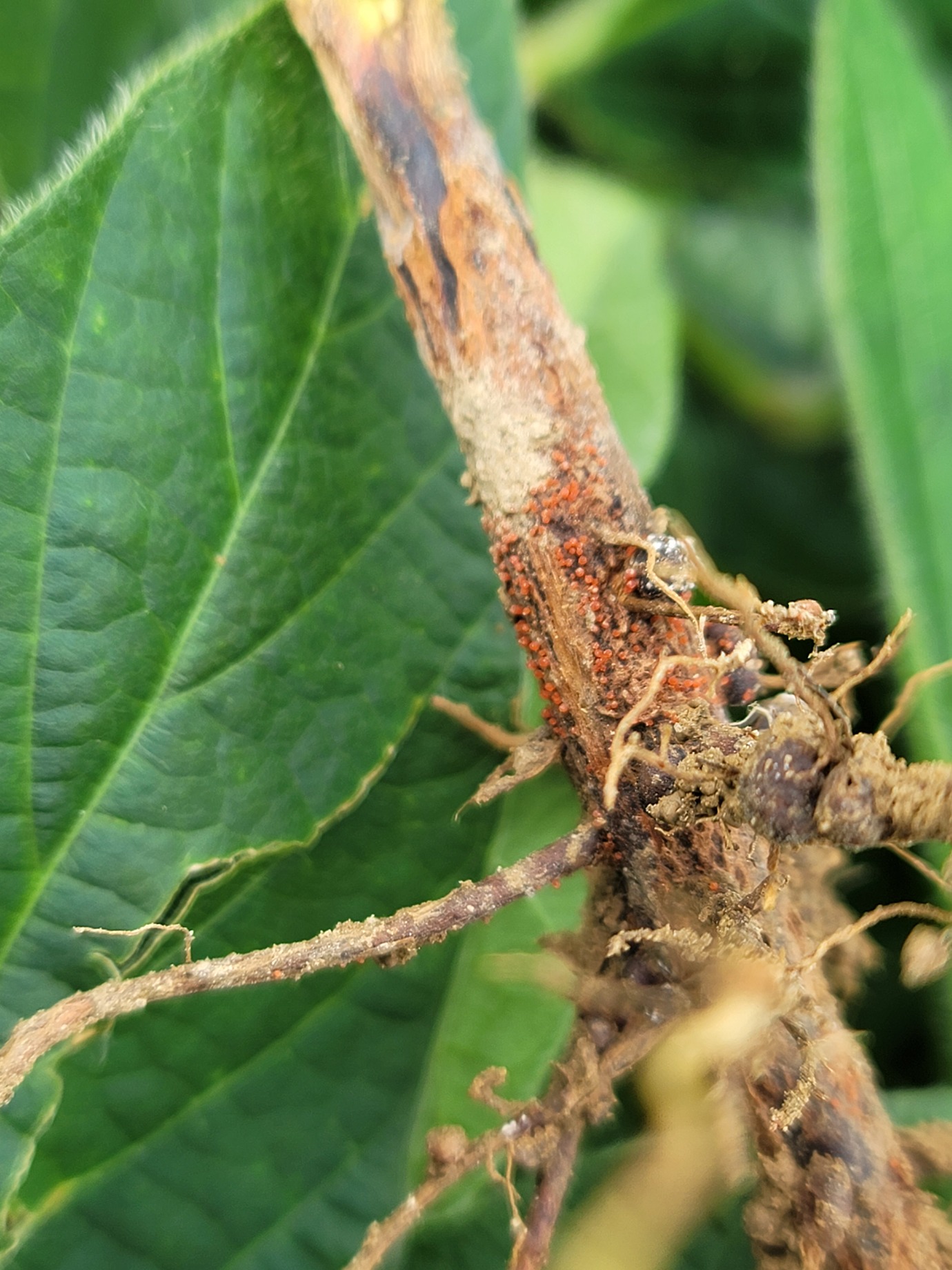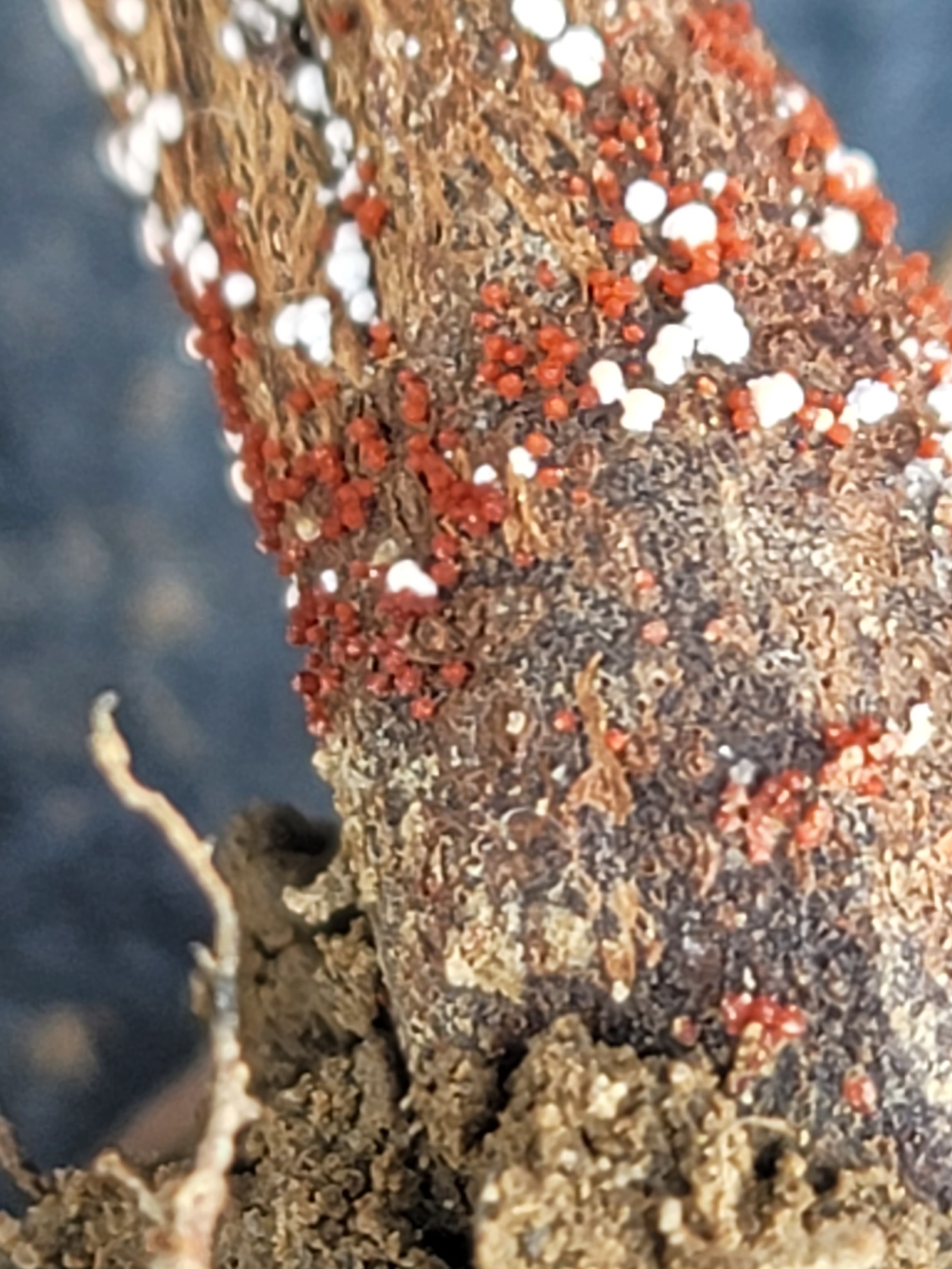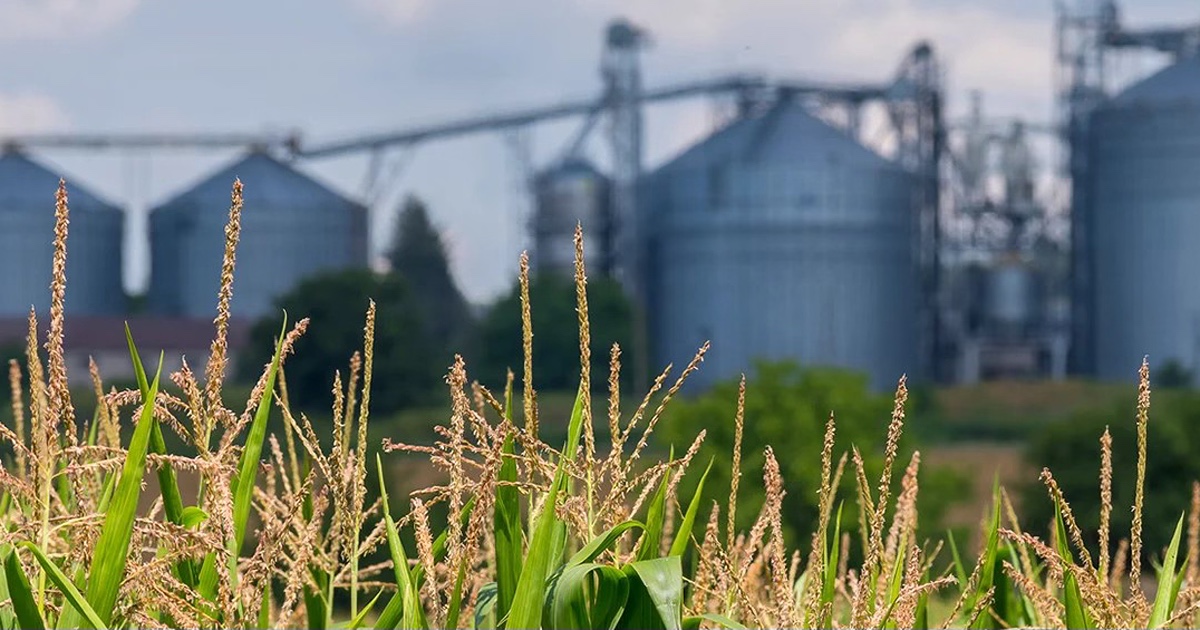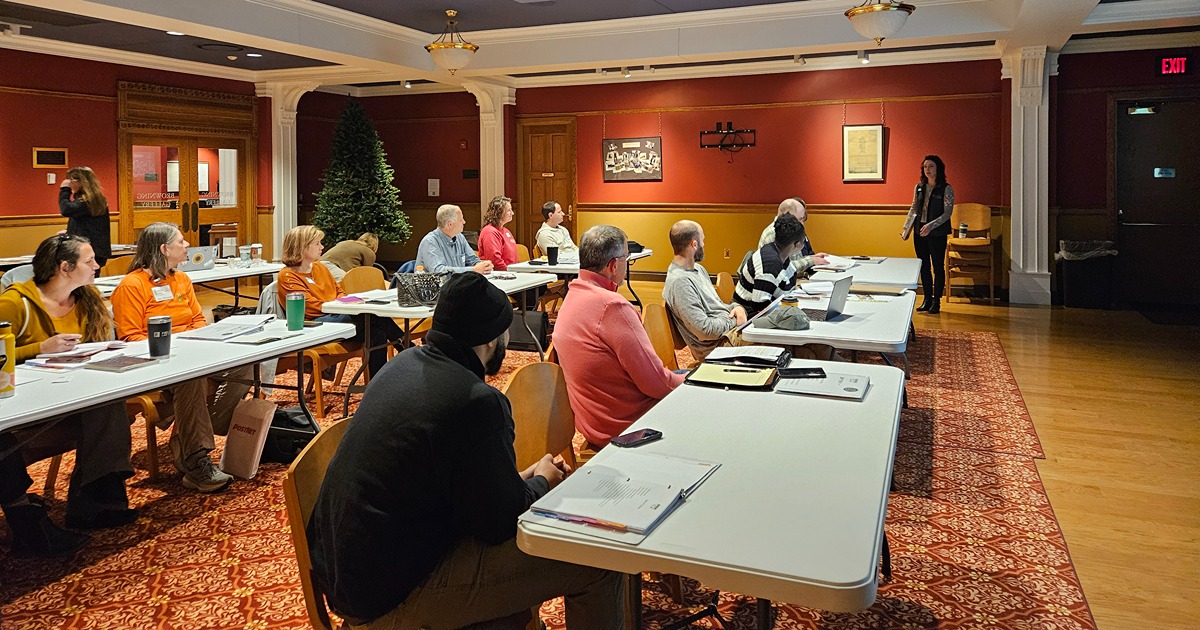New-to-Indiana soybean disease may plague Hoosier farmers
WEST LAFAYETTE, Ind. — Red crown rot, a disease that affects soybeans and other legumes, has spread to Indiana fields.
Symptoms of the disease resemble those of other diseases, such as sudden death syndrome or brown stem rot. Like those diseases, red crown rot can cause yellow speckling on leaves and interveinal necrosis and chlorosis, where the veins remain green and the tissue between veins yellows or browns.
Red crown rot differs from sudden death syndrome because the leaves may stay attached instead of dropping. As the name implies, the disease also causes the crown, or area of stem near the soil line, to turn red. Fungal structures may appear on the red tissue, but they do not always appear.
The disease is soilborne, meaning it can be transmitted through soil. Crop rotation of nonlegumes, like corn, may be useful for reducing the initial inoculation or survival, of the disease, but a multifaceted management program will be necessary for future farming of soybeans.
“There’s nothing farmers can do now to manage the disease this season,” said Darcy Telenko, Purdue associate professor of botany and plant pathology. “What’s important now is to understand if they have the disease in their field so that they can make disease management decisions in the future.”
 Close analysis reveals the fungal structures that many plants infected with red crown rot develop.
Close analysis reveals the fungal structures that many plants infected with red crown rot develop.  Red crown rot has many symptoms, including the formation of fungal structures near the roots.
Red crown rot has many symptoms, including the formation of fungal structures near the roots. Researchers first detected red crown rot in Indiana in 2022. Counties with a confirmed presence of the disease as of Aug. 23, 2024, include Adams, Bartholomew, Rush, Decatur and Spencer.
The disease has been common in southern states for decades, but its appearance in Indiana, Illinois, Kentucky and other Midwest states is new.
“We need farmers’ help to track the disease across the state,” Telenko said. “Collecting samples helps us do that.”
Farmers can submit suspected red crown rot samples of soybeans to the Purdue Plant and Pest Diagnostic Laboratory (PPDL) at no charge.
Plant and Pest Diagnostic Laboratory
Purdue University
915 Mitch Daniels Blvd., LSPS 116
West Lafayette, IN 47907-2054
Farmers should ship samples early in the week with proper labeling. Each sample label should include the collection date, soybean variety, field zip code or county, and previous crop at that location.
If you have questions, contact Darcy Telenko at dtelenko@purdue.edu or 764-496-5168, or PPDL at ppdl-samples@purdue.edu or 765-494-7071.
About Purdue Agriculture
Purdue University’s College of Agriculture is one of the world’s leading colleges of agricultural, food, life and natural resource sciences. The college is committed to preparing students to make a difference in whatever careers they pursue; stretching the frontiers of science to discover solutions to some of our most pressing global, regional and local challenges; and, through Purdue Extension and other engagement programs, educating the people of Indiana, the nation and the world to improve their lives and livelihoods. To learn more about Purdue Agriculture, visit this site.
About Purdue University
Purdue University is a public research university leading with excellence at scale. Ranked among top 10 public universities in the United States, Purdue discovers, disseminates and deploys knowledge with a quality and at a scale second to none. More than 106,000 students study at Purdue across multiple campuses, locations and modalities, including more than 57,000 at our main campus locations in West Lafayette and Indianapolis. Committed to affordability and accessibility, Purdue’s main campus has frozen tuition 14 years in a row. See how Purdue never stops in the persistent pursuit of the next giant leap — including its integrated, comprehensive Indianapolis urban expansion; the Mitch Daniels School of Business; Purdue Computes; and the One Health initiative — at https://www.purdue.edu/president/strategic-initiatives.
Media contact: Olivia De Young, odeyoung@purdue.edu
Sources: Darcy Telenko, dtelenko@purdue.edu




